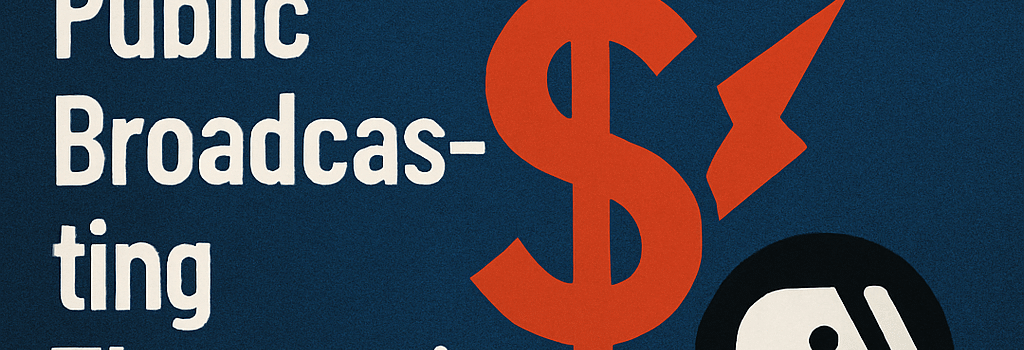Senate Cuts $1.1B from Public Broadcasting, Threatening NPR and PBS

On July 17, 2025, the U.S. Senate approved President Trump’s rescissions package in a 51–48 vote, rescinding $1.1 billion allocated to the Corporation for Public Broadcasting (CPB) for fiscal years 2026 and 2027. With all 51 affirmative votes cast by Republicans and only Senators Susan Collins (R-Maine) and Lisa Murkowski (R-Alaska) dissenting, the measure threatens to deprive NPR and PBS affiliates of critical funding for operations, infrastructure upgrades, and the national emergency alert backbone.
Background: CPB’s Role and Fiscal Impact
The CPB is a federally chartered nonprofit that disperses more than 70 percent of its annual budget—$545 million in FY2025—to roughly 1,500 local public radio and television stations. In FY2025, approximately:
- 66.9 percent of CPB funds supported TV programming;
- 22.3 percent funded radio programming;
- the remaining 10.8 percent covered administration and interconnection infrastructure.
The rescinded $1.1 billion includes a $60 million allocation for public broadcasting interconnection system upgrades: modernizing fiber rings, satellite transponder leases, and transitioning to ATSC 3.0 broadcast technology with IPv6-capable emergency alert gateways.
Key Provisions of the Rescissions Act
- Elimination of CPB funding for FY2026–27, effectively zeroing out federal support starting October 1, 2025.
- Rescinding $9.4 billion from other agencies including the State Department and USAID.
- Defeat of a bipartisan amendment by Sen. Tammy Baldwin (D-Wis.) to preserve public media funding (52–47).
- Failure of Sen. Murkowski’s amendment to restore CPB funding while prohibiting grants directly to NPR.
Digital Infrastructure and Resilience
Public broadcasters rely on a hardened, redundant network that integrates:
- Dual 10 Gbps fiber rings with automatic failover using segment routing (SR-TE).
- Ku-band and C-band satellite transponders for national distribution of live feeds and emergency alerts.
- ATSC 3.0 digital TV transmitters with embedded CAP (Common Alerting Protocol) decoders.
CPB’s interconnection upgrade plan, partially funded by the rescinded $60 million, aimed to replace legacy MPEG-2 encoders with H.265/HEVC hardware, implement AES-128 encryption for emergency alert data, and deploy software-defined networking (SDN) controllers to orchestrate real-time traffic rerouting during disasters.
Emergency Alert Systems at Risk
Two core systems depend on CPB funding:
- PBS WARN: Leveraging ATSC 3.0 transmitters, this system broadcasts Wireless Emergency Alerts (WEAs) even when cellular and Internet connectivity fail.
- Public Radio Satellite System: Receives FEMA’s Emergency Alert System (EAS) feed and distributes Presidential alerts to local stations via C-band satellite.
“Stations running on backup generators are built to broadcast through disasters,” Sen. Maria Cantwell (D-Wash.) noted. “PBS WARN works when everything else goes dark—ensuring warnings about tornadoes, fires, floods, and evacuations reach every cell phone in seconds.”
In 2024, PBS WARN transmitted over 11,000 alerts—a 30 percent increase year-over-year—underscoring its critical role in public safety.
Alternative Funding Models and Technological Innovation
With federal dollars in jeopardy, public broadcasters are exploring:
- Micro-donation platforms integrated into streaming apps, leveraging WebRTC for low-latency community fundraising.
- Edge caching and peer-to-peer CDNs for distributing educational content over broadband ISP partnerships.
- Blockchain-based micropayments for licensing archival footage and niche local programming.
Analysts also highlight the potential of deploying ATSC 3.0 mobile TV receivers and over-the-top (OTT) channels to diversify revenue while preserving emergency alert capabilities.
Expert Perspectives and Industry Reactions
Leah Nguyen, a broadcast engineer at a Midwestern PBS station, warns: “Without CPB grants, our centralcast hub’s redundant encoding rigs—each costing over $250,000—will go offline. It’s not just programming; it’s the backbone of our emergency readiness.”
America’s Public Television Stations issued a statement calling the cuts “devastating,” noting that some rural stations lack any alternative media infrastructure. NPR CEO Katherine Maher cited a recent survey showing that over 75 percent of Americans—across party lines—depend on public media for timely emergency updates and trusted local journalism.
“We call on the House of Representatives to reject this elimination of public media funding, which directly harms their communities and could place lives at risk,” Maher said.
Legislative Outlook and Next Steps
The rescissions package returns to the House, which approved an earlier version in June 2025. Public broadcasters, state emergency management agencies, and tech-policy advocates are mobilizing to lobby House members. If funding is not restored before October 1, 2025, the CPB could be forced to halt operations and transfer critical infrastructure to private consortiums, potentially compromising data security and public access standards.
Key Takeaways
- Senate vote rescinds $1.1 billion for CPB in FY2026–27.
- Critical upgrades to fiber, satellite, and ATSC 3.0 systems are imperiled.
- Emergency alert systems (PBS WARN, Public Radio Satellite) face shutdown.
- Broadcasters explore micro-donations, edge CDNs, and OTT to compensate.
- House vote expected in coming weeks; advocacy efforts intensify.